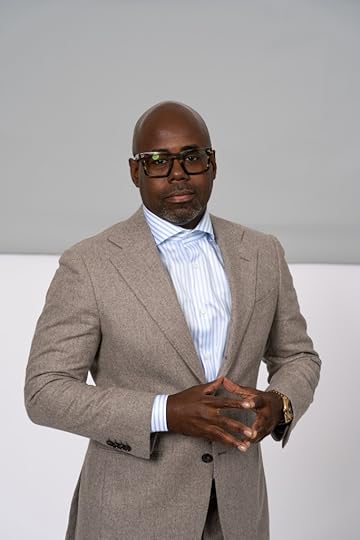Victoria Fox's Blog, page 204
July 17, 2023
No, James Cameron Is Not Making A Movie About The Titan Disaster

Indeed, Cameron feels it’s offensive to even consider that he should make a movie about OceanGate’s Titan and the passengers on board. In a post on the filmmaker’s Twitter account, he said very succinctly:
“I don’t respond to offensive rumors in the media usually, but I need to now. I’m NOT in talks about an OceanGate film, nor will I ever be.”
This was in response to a story printed in The Sun claiming to have insider information on Cameron’s upcoming projects. As reprinted in the Hollywood Reporter, the Sun claimed:
“The Titan disaster is already being looked at as a major series for one of the world’s biggest streamers — and James is the first choice for director. It is a subject close to his heart. He told the story of the Titanic so compassionately it feels like a natural step for him to take this on. Retracing the steps of those on board the Titan is a massive undertaking, but there would be a lot of time, money and resources dedicated to it.”
The language of the Sun piece is clearly speculative (“it feels like,” “would be,” etc.). Cameron was not quoted in the piece, nor was anyone from “one of the world’s biggest streamers,” whichever one it may be. This was merely conjecture about someone who had made undersea disaster movies before. Such rumors were also likely magnified by Cameron’s appearance on many national news broadcasts to talk about the Titan. Because he had also designed submersibles and visited the Titanic, his professional input was requested. Cameron spoke openly about what happened with the Titan … and how things went wrong.
Greg Tarzan Davis Didn’t Tell His ‘Top Gun’ Co-Stars About His ‘Mission: Impossible’ Casting
Greg Tarzan Davis is the only actor who can say that his first three films were Tom Cruise-led blockbusters, beginning with Top Gun: Maverick and now, Mission: Impossible — Dead Reckoning Part One and Part Two. Davis bonded with Maverick co-writer and Mission: Impossible co-mastermind Christopher “McQ” McQuarrie on the set of Joseph Kosinski’s smash hit, and so McQ later conceived Dead Reckoning Part One with Davis in mind for a role.
Overall, Davis is grateful to his seasoned collaborators for passing on their knowledge to him, starting with his Dead Reckoning Part One scene partner, Shea Whigham. Whigham not only taught him the value of providing a variety of different takes, but he also helped him with his self-tapes during their downtime. The lessons didn’t stop there as Davis once again shadowed McQ on set, as well as in the editing room, alongside Cruise and editor Eddie Hamilton.
Related Stories“I really appreciate that McQ and Tom allowed me to come to set and also sit in the editing room with them to see how [Mission: Impossible — Dead Reckoning Part One] was made,” Davis tells The Hollywood Reporter during a conversation prior to the SAG-AFTRA strike. “They’ve really become great mentors for me in trying to teach me filmmaking, and Tom compared it to passing a baton to me and other filmmakers by saying, ‘Hey, we want you to continue to make these great films.’ So they’re not secretive about their magic.”
During the making of Maverick, Davis created a lifelong connection with his fellow co-stars and F-18 pilots, as they all risked their lives in order to achieve the most realistic and immersive flying scenes possible. However, despite all of them being members of Cruise and McQ’s club, Davis still kept his Mission: Impossible cards close to his vest.
“I am big on holding secrets. I hate spoilers. So when I booked Mission, they found out later from a press release photo of me on top of the train with Tom, Esai [Morales] and Shea. They were like, ‘You didn’t tell us that you were on Mission!’ And I was like, ‘My bad, my bad,’” Davis shares.
In Dead Reckoning Part One, Davis plays Degas, who’s a part of the CIA’s Clandestine Services, and he, along with Whigham’s Briggs, is tasked with chasing down Ethan Hunt and retrieving a highly valued key. While Briggs is firmly committed to catching Hunt, Degas is a bit more open-minded about the situation, something Davis expects to continue in Part Two.
“[Degas is] the voice for the audience by saying, ‘No, maybe [IMF] is doing something right. Maybe we’re the ones who have it wrong,’” Davis says. “And you can probably see Degas’ questioning leading him to potentially make different choices down the line. Degas’ questions of, ‘Is [Ethan] doing something right, and should I be doing something different?’ may be explored in the future.”
Below, during a conversation with THR, Davis also talks about the terrifying moment he had in the middle of filming Dead Reckoning Part One’s thrilling train sequence.
So did your leftover Dramamine from Top Gun: Maverick come in handy during the train sequence?
(Laughs.) I don’t think anything was gonna prepare me for the train sequence. I didn’t even realize that I was gonna be on top of a train. I had never been on a train before, let alone on top of one. So I’m still trying to process that, and the Dramamine does not help.
We covered your casting process in detail last year, so I want to cut to the very first day where you hung out on set to watch the motorcycle jump. I saw a video of you guys watching it go down and then almost everybody started laughing once it happened. Was that your way of processing or coping with your collective fear and anxiety?
Have you ever heard the expression “laugh at my pain”? I wasn’t even in pain, but I was dying laughing. Like you said, it’s a coping mechanism in order to calm yourself down from the craziness that this man just did. And let me tell you, when we first got up there on top of the mountain, we were walking on the bridge, and then Tom came flying over in a helicopter, hanging outside of it and waving down at us. And all of a sudden, he just dropped, and it looked like he just jumped out of the helicopter and committed suicide. That was him warming up! So when we got to see him do the ramp jump and hear that buzzing go past us, it was like, “Oh, this is really happening.” I also saw that video earlier today for the first time in three years, and it brought back some memories.
McQ tends to write these movies and develop these characters on the fly, in response to the action, so when did you start to learn concrete details about your character?
When I saw the film. (Laughs.) Honestly, when I saw the film, I was like, “Oh, that’s the direction my character is supposed to go in. Now it makes sense.” The way McQ shoots can be very nerve-racking for people who are just entering into his process and his world of how he creates. And that goes for every director who has a particular type of filmmaking style. So it can be very nerve-racking, but at the same time, it’s very comforting because he covers all his bases. You’ll do different takes and different ways that your character can play something, so you never know exactly how it’s going to end up in the editing room. It almost gives you room to change the story yourself. So if I’m giving a performance in a particular way and I’m doing it multiple different times in different variations, I’m kind of telling the story myself, which is very interesting.
 Shea Whigham and Greg Tarzan Davis in Mission: Impossible — Dead Reckoning Part One Paramount Pictures and Skydance
Shea Whigham and Greg Tarzan Davis in Mission: Impossible — Dead Reckoning Part One Paramount Pictures and Skydance Degas and Briggs (Shea Whigham) are a part of the CIA’s Clandestine Services, but do you consider them to be a Training Day-type situation where an idealistic rookie cop is paired with the cynical veteran cop? [Writer’s Note: At the New York premiere following this interview, Davis called Training Day one of his favorite films.]
Shea and I watched some films together. We discussed the type of dynamics that we wanted, but not initially though. Before we even started filming, we tried to figure out who we were because we obviously didn’t know. So we came to set with an idea of what we wanted, but McQ came up with a different take on it and we were like, “Okay, let’s go with that.” And then, when we started performing, it went in a different direction. McQ said, “This is way better. This is the direction we’re gonna go in.” So then we started watching films like Training Day, Starsky & Hutch and Midnight Run. We started watching those types of things, and that was the realm that we wanted to be in with our characters.
There’s a great deal of comedy in the film, especially when Shea’s character has to check random people for masks by pulling on their cheeks or sticking his fingers in their mouth. Was it tough to keep a straight face while watching Shea do those bits of business?
Yes, because you never know what Shea is gonna do. He’s a loose cannon. He doesn’t tell you, “This is what I’m going to do.” He’ll just touch my chest and say, “Hey, stay with me. Stay with me.” And I’m like, “Okay, let’s see where this is gonna go.” So when they called action, he did all the … (Davis pulls his cheek and sticks his fingers in his mouth.) So I tried my best to stay in character, and every take is so different from the last take. He’s very good at giving these drastically different takes when you’re expecting him to do the exact same thing. There was one take that didn’t make it — and it couldn’t make it because it just wasn’t right for the film — but it was so funny. He took it to the next level. Shea’s a character and a great actor.
You told me previously how Shea improved your self-tapes during filming, and he told me that he was quite proud that one led to Grey’s Anatomy. Are his lessons still making a difference?
They are. Shea is very kind as well. He loves the craft so much, and he told me, “I love when someone else loves it just as much as me.” So that’s why he was so willing to help me out, and he gave me his 30 years of experience. So I don’t have to spend as much time as him learning what he’s learned over that time period. He’s a great scene partner to work off of, and like I mentioned, he does different takes all the time. So I was like, “Let me start doing that as well.” I just love being around him and watching him work.
Degas speaks a bit of Italian and maybe even some French. Did you learn anything beyond those phrases you had to speak?
Duolingo helped me. I was in these places for months at a time, so I got a chance to pick up on some of the languages, which was really fun. If I didn’t, then I would’ve been a butthole for living in these beautiful countries and not trying to learn their cultures.
I’ve always mocked fictional governments whenever they question the likes of Ethan Hunt or Jack Bauer, considering they’ve both saved the world countless times. What more do they have to do?
(Laughs.)
So I love when Degas basically voices a similar point. He argued with Briggs that maybe Ethan has had a good reason to go rogue each and every time. So what did you make of Degas’ optimism there?
That’s actually a great question, and it’s him basically taking a stance and a point of view on right and wrong. What’s the moral question? He’s the voice for the audience by saying, “No, maybe [IMF] is doing something right. Maybe we’re the ones who have it wrong.” And you can probably see Degas’ questioning leading him to potentially make different choices down the line. Degas’ questions of, “Is [Ethan] doing something right, and should I be doing something different?” may be explored in the future.
 Greg Tarzan Davis and Shea Whigham in Mission: Impossible — Dead Reckoning Part One Paramount Pictures and Skydance
Greg Tarzan Davis and Shea Whigham in Mission: Impossible — Dead Reckoning Part One Paramount Pictures and Skydance Besides being the voice of the audience, Degas and Briggs function almost like a shoulder angel and devil, only they’re debating Ethan’s choices from the outside.
That’s a great way to put it. Shea and I looked at Briggs as being the old-school way of thinking. He’s someone who’s been in this scene for so long, and he’s done it his way and is stuck in his ways. And Degas is more of the newer way of thinking. He does things by the book, but he’s also more of a free thinker by saying, “Well, maybe this isn’t right.” So you put it a great way with the devil and the angel on the shoulder. Briggs is all the way left and Degas is all the way right, although I wouldn’t say that Degas is all the way right. Briggs is definitely on one side and I don’t think there’s any convincing him otherwise. Whereas Degas can potentially be convinced to go in either direction, depending on what he feels is the right move to make.
So I did something of a travelogue with Shea, and I thought it’d be cool to get your own highlights from each location and sequence, starting with Abu Dhabi International Airport.
Filming in Abu Dhabi, I remember the huge, beautiful airport that we had to ourselves. It’s a massive airport, and we were running up and down that mothersucker. The Osprey was also a special experience. To go from F-18s in Maverick to the Osprey, that was pretty cool.
I thought for sure that you and Shea would have had ample time to get your cardio up in order to do the impossible and chase Tom Cruise for an entire movie, but that wasn’t the case. Shea said that your pursuit was decided last minute in Venice.
Yeah, you know how these things are done. They’re trying to figure out what exactly we’ll be doing, so I wasn’t properly prepared to know that this was what I was gonna be doing. If I did know, I would’ve hired an Olympic running coach to prepare me for it, but it was all in good fun. I can now say that I was a part of Tom’s iconic [slogan of] “running in movies since 1981.”
And what was your takeaway from the escapades in Rome?
Oh man, being in the alley and having a shootout, I thought that was the coolest thing ever. As a young boy, I would play cops and robbers in my mom’s living room and act like I was having shootouts, and now I was finally doing it on the biggest possible scale. So it was my childhood playground coming to life, and that was the most exciting part for me in Rome.
Venice …
I can’t say I have a favorite location because every location has a special place in my heart, but Venice felt like we were all at summer camp. We would all go out late at night and film, and sometimes, we would just walk the streets of Venice or run through the alleyways. It was like we were playing freeze tag. Venice had this mystical feeling like we were in another dimension. It was that magical.
And lastly, the standoff atop a moving train in Norway …
Honestly, Tom would be like, “It’s not going fast enough.” And I remember sitting on top of the train, saying, “What do you mean it’s not going fast enough!?” We were up there with these thin wires attached to our hips from both sides of the train. I think the top speed was 50 miles per hour, I could be wrong, but we were hauling in this valley between mountains. You’re expected to stay in character and act like this is normal, but I can’t say it was the easiest thing to do. There was one take where something happened and I lost my shoe. It fell off the train and off a bridge into a river, and that really scared me. I was like, “Wow, that could have been me.” We never found that shoe, so R.I.P. Nike Air Max.
A PA did everything they could.
Yes, and unfortunately, they couldn’t find it.
Hopefully, there was room in the budget to buy you another pair of shoes.
(Laughs.) Did we? I think it all went towards building the train. So I was barefoot for the rest of the shoot. (Laughs.)
So, Shea said that you still have a ways to go on Part Two. Are you itching to get back? [Writer’s Note: This interview was conducted prior to the SAG-AFTRA strike.]
I’m ready to get back to it. After watching Part One, I immediately texted Tom and McQ to ask, “When do we get back to work?” What McQ and Tom did so well with Part One was complete the story where you’re not left with this giant cliffhanger that feels unfulfilled. You feel like, “Oh wow, I got everything I needed, and if this was the end of just one movie, I would be satisfied.” But at the same time, McQ ends it with just enough of a cliffhanger for you to want more. And despite me being very closely attached to Part One and being in it, I was of two minds while watching it as an audience member. I was like, “I want to see more, so let’s get back to work so that I can see more.”
So I am ready to get back to work and show the world what McQ has cooked up in his head. I have bits and pieces of the story, and I’m excited to put that on screen. Everybody who’s seen it has asked me all these questions, and I want to say, “Stop asking me questions. Just watch Part Two and you’ll get all your answers.” So, once we’re done filming Part Two, everybody will be satisfied. We’re on the verge of topping Part One based on what we’ve filmed so far.
I don’t know how you’re going to top Part One, but I believe that you will.
I was the same way. I didn’t know how, but we’re now on the verge of topping it.
On Top Gun: Maverick, you got to hang out and listen to Tom’s stories. You also shadowed McQ a bit. Did protocols make those extracurriculars rather impossible on Part One?
No, I actually got a chance to really get in there with McQ and Tom, and when I wasn’t filming, I was on set with them. There was never a day that I wasn’t on set. So, while I was watching the film for the first time, I was having these flashback moments of, “Oh wait, I know how this was done even though I wasn’t in the scene.” And it was because I was there. So I really appreciate that McQ and Tom allowed me to come to set and also sit in the editing room with them to see how this was made. They’ve really become great mentors for me in trying to teach me filmmaking, and Tom compared it to passing a baton to me and other filmmakers by saying, “Hey, we want you to continue to make these great films.” So they’re not secretive about their magic. They want to share so that we can continue to have films like this on the big screen, and I thank them for that. I spent a lot of hours just following McQ. He wouldn’t get annoyed, but I would always ask, “Am I annoying you now? Am I annoying you now?” I’d be up against his back everywhere he went and he’d turn around and go, “Tarzan, you’re here.” And I was like, “Yes, I am.” (Laughs.)
 Greg Tarzan Davis in Top Gun: Maverick Courtesy of Paramount Pictures
Greg Tarzan Davis in Top Gun: Maverick Courtesy of Paramount Pictures Is the Maverick group text still pretty active?
It’s never quiet. It’s probably not as active, but it’s never quiet. We’re all doing our own things, which is great, but it’s hard for us to see each other in person. Jay [Ellis] is in one country. I’m here in New York with Danny [Ramirez] for the premiere, but he was filming somewhere recently. Lewis [Pullman] and Monica [Barbaro] have also been filming, but we still find time to say, “Hey, what’s up? Hey, congratulations. I saw this. Hey, are you in town?” Glen hit us up to say, “Hey, I just got back to L.A. Who’s in town? Can we link up?” Unfortunately, only Lewis was in town at the time, so I believe he went to see him. So we’re still a family, and that won’t change. That was a special, special group.
Did you send them photos from the Mission set?
No, I didn’t! I am big on holding secrets. I hate spoilers. I hate when people give me spoilers. I hate spoiling things for other people. So when I booked Mission, they found out later from a press release photo of me on top of the train with Tom, Esai [Morales] and Shea. They were like, “You didn’t tell us that you were on Mission!” And I was like, “My bad, my bad.” So I’ve kept all of that secret, but I think Monica and Lewis are gonna see Mission today in L.A. and Danny is gonna watch the film with me at the New York premiere.
***
Mission: Impossible — Dead Reckoning Part One is now playing in movie theaters. This interview was edited for length and clarity.
Robert Lieberman, Director of ‘Fire in the Sky’ and ‘D3: The Mighty Ducks,’ Dies at 75

Robert Lieberman, who directed films including Fire in the Sky and D3: The Mighty Ducks, episodes of The X-Files, Dexter and Criminal Minds and thousands of commercials, has died. He was 75.
Lieberman died July 1 in Los Angeles after a long battle with cancer, his son, Nick Lieberman, who co-directed Searchlight Pictures’ Theater Camp, which hit the big screen this weekend, announced.
Lieberman helmed TV spots for such companies as McDonald’s, Hallmark and Oreo and worked with talent ranging from President Clinton, Ray Charles and Jerry Lewis to Michael Jordan, Anne Hathaway and Kenan Thompson. He received more than two dozen Clio Awards and, in 1979, the inaugural DGA Award for commercials.
Related StoriesMuch of his work was done through Harmony Pictures, the company he founded with Stuart Gross.
In addition to Fire in the Sky (1993), starring D.B. Sweeney and Robert Patrick, and the hockey sequel D3: The Mighty Ducks (1996), starring Emilio Estevez, Lieberman helmed Table for Five (1983), starring Jon Voight and Richard Crenna, and All I Want for Christmas (1991), starring Lauren Bacall and Thora Birch.
At the University at Buffalo, Lieberman essentially founded the school’s film program and became the first UB student to graduate with a degree in film.
He worked as a video assistant with the NFL’s Buffalo Bills, and after coming to Los Angeles, the first telefilm he directed revolved around pro football: 1980’s Fighting Back: The Story of Rocky Bleier, starring Robert Urich as the war hero and Pittsburgh Steelers running back.
Lieberman also helmed a first-season episode of thirtysomething in 1987 and went on to direct 19 pilots, 16 of which went to series, including Gabriel’s Fire, Strong Medicine and The Dead Zone.
Lieberman was married to actress Marilu Henner from 1990-2001, and they had two children, Nick and Joseph. (Henner’s first husband, actor Frederic Forest, died in June.)
Survivors also include his third wife, Victoria, whom he married in 2010; two children, Erin and Lorne, from his first marriage; his son-in-law, producer Trent Othick; his stepdaughter, Kristen Konvitz, a UTA agent; and his sister, Fern.
In September, Lieberman returned to Buffalo to screen Fire in the Sky at a local theater. On the occasion, The Buffalo News asked him what he would tell aspiring filmmakers.
“My advice to people who are trying to get in the business is you’ve got to be absolutely fearless and relentless,” he said. “If you want it, you’ve got to want it with everything in your being, and then you have to pursue it with everything of your being.
“I wanted to be in this business, and now looking back over my whole career, I love that I spent my life in this business. I got to go to work and have fun: Do what I wanted to do, create what I wanted to create; wake up in the morning with blank canvases and go out and paint, and with somebody else’s money. It’s craziness, and I got to do it for over 50 years.”
Tom Cruise Lobbied Studios on SAG-AFTRA Stunt and AI Positions (Exclusive)

How important is the AI issue to members of SAG-AFTRA? Important enough that Tom Cruise Zoomed into a June negotiating session to urge the Alliance of Motion Picture and Television Producers to hear out the guild’s concerns on the issue, The Hollywood Reporter has learned.
That wasn’t the Mission: Impossible star’s sole concern. He also wanted to urge the AMPTP to support the guild’s position on stunt performers.
Cruise also had some words for SAG-AFTRA reps regarding the delicate post-pandemic state of movie theaters.
Related StoriesSAG-AFTRA sometimes calls in performers during negotiating sessions to discuss issues in which they have expertise. Any member can request to address a negotiation session and the guild can evaluate the value of having them participate. Apparently, the guild concluded that Cruise’s point of view was worthy. (It’s understood that no other star of his caliber participated in the negotiations in this capacity.)
SAG-AFTRA had a handful of proposals on the table concerning stunt professionals, including stunt coordinators and stunt performers, which the 160,000-strong union represents. The union also sought to institute more guardrails on the use of generative AI in entertainment in its 2023 talks with studios and streamers, focusing on ensuring that performers give consent and are appropriately compensated when their performances are ingested into the technology.
Of course, despite Cruise’s participation in the talks, after around five weeks of negotiation the performers’ union and the AMPTP failed to come to a deal by 11:59 p.m. on Wednesday, July 12, when the union’s film and television contracts package expired. Starting July 14, performers began picketing at studio lots and corporate headquarters in New York and Los Angeles and withholding their work, which subsequently has shut down or delayed productions including Mission: Impossible 8.
In addition to lobbying studios and streamers on behalf of SAG-AFTRA, Cruise is said to have asked the union to consider allowing actors to promote films during a strike given the fragile state of movie theaters, reminding his union that promotion matters to actors, too. It felt “uncomfortable,” says a source who was present.
SAG-AFTRA’s current strike rules maintain that publicity, including “conventions, interviews, tours or promotion via social media of any struck work or struck companies” is expressly forbidden during the work stoppage.
‘Mission: Impossible’ Stars, Director on Latest Film’s “Very Timely” Villain: “People Are Scared”

[The following story contains spoilers from Mission: Impossible — Dead Reckoning Part One.]
In Mission: Impossible — Dead Reckoning Part One, Tom Cruise and his Impossible Missions Force face off against an all-powerful rogue form of artificial intelligence, known as The Entity, which has the ability to manipulate people, weapons and various defense systems.
In the film, Cruise’s Ethan Hunt and his team of Luther (Ving Rhames), Benji (Simon Pegg), Ilsa Faust (Rebecca Ferguson) and newcomer Grace (Hayley Atwell) try to keep The Entity from falling into the wrong hands, going after various power brokers who want to acquire and control this dangerous technology.
Related StoriesAnd Dead Reckoning Part One hits theaters at a time of great concern about the real-world threat posed by AI, including in Hollywood, where restrictions around what the technology can and cannot be used for in film and TV are at the heart of ongoing labor disputes between striking writers and actors and the studios and streamers.
Speaking to The Hollywood Reporter at the Dead Reckoning U.S. premiere in New York last week, prior to SAG-AFTRA going on strike on Thursday, director Christopher McQuarrie, who co-wrote the script with Erik Jendresen, as well as stars Simon Pegg and Rebecca Ferguson, indicated they were surprised at how the film went from tackling what seemed like a sci-fi threat to dealing with a potentially dangerous technology now very much in the public discourse.
“I remember [McQuarrie] talking about it early on, and I thought, ‘Oh, that’s a really good sort of science fiction-y idea.’ Mission: Impossible has always had that edge of sci-fi, you know, because the tech is always way in advance of where we are. And I felt like this is really on point. This is a clever idea,” Pegg recalled. “Of course, the conversation about AI has been amplified in the time that we’ve been making this movie. So it’s coming out in a time when it’s in the social discourse. So, it feels very timely.”
McQuarrie was aware of the threat posed by “information technology” when he started working on the seventh Mission: Impossible installment in 2018, but he admits he’s concerned about how it’s evolved.
“It was something that was transitioning from being an abstract idea to being something that people understood,” he said of AI in 2018. “What it’s evolved into is — I’m a little freaked out. … To be watching as the movie and the technology were evolving at the same rate is something else.”
Ferguson admits that while she was working on the film she didn’t realize the onscreen adversary would be such a real-life concern as she now recognizes it to be.
“AI is obviously something we’re battling,” Ferguson said, referring to the writers strike and what was then a potential actors strike. “And people are scared. We’re living in a world where AI is going to be merged into our world, and we have to see where we fit in and how it works and that it doesn’t just walk over our jobs.”
Esai Morales, who plays a human adversary in the film, joked that he has a special connection to AI with the letters “a” and “i” in his name, before saying, in all seriousness, that the technology is “something we have to be very careful about.”
“It can be a blessing, but it’s like fire, right? How you use it is all,” he said.
Dead Reckoning Part One is also hitting theaters after a multi-year filming process that took place amid the COVID-19 pandemic, with the cast and crew dealing with at least five shutdowns due to the virus, which both Cruise and McQuarrie contracted.
After the challenges of making the movie, Cruise and Co. were happy the film was finally done and ready to hit theaters.
“It’s such a relief that we finally get to share it with everyone,” Atwell told THR.
“It was a challenge making the film, but, in some respects, the nature of that challenge was channeled into the movie itself,” Pegg told THR. “I feel like our determination to make the movie is reflected in the movie. Tom saw the pandemic as an existential threat to cinema and decided to take it on and not allow it to finish us, and I think that was absolutely the right thing to do. We went into it with intelligence and care, and we figured out how you make a film in a pandemic.”
Saying it was “surreal” to see his years of work come to fruition, McQuarrie said, “It was just about focusing on the work that was right in front of you and assuming that one day we would be standing here talking. It’s kind of amazing.”
Despite dealing with the contemporary challenges of AI and the pandemic, Dead Reckoning reaches into the Mission: Impossible past, bringing back Henry Czerny’s Kittridge for the first time since the first film in 1996, a request that the actor said he initially thought “was a joke.”
“I got my first call in 1995 — I was in Brazil — that they wanted me to come do their Kittridge. And [this time] I was in the middle of doing my Los Angeles errands as any middle-class person would, and I got a call from my rep saying they’d like to bring Kittridge back, and I thought it was a joke. Then, two days later, I’m talking with Chris McQuarrie about his plan to bring Kittridge back, and we’re going to give him some gravitas, and we’re going to give him some weight of the 25 years that he’s spent in Washington, and we want to see that relationship between Ethan and Kittridge. Will you do it? What do you say to that?,” he recalled, speaking at the July 10 premiere. “Anything other than ‘yes’ with an exclamation mark would put you in an insane asylum.”
Working with McQuarrie, Czerny experienced the director’s somewhat improvisational approach to filmmaking, which he called “fantastic” but initially “disconcerting.”
“I’m used to, you know, you get three takes. We’re going to do a master, medium, close up or some variety, and it’s great when they do that variety. The camera’s going to do half of the work for you or a lot of the work for you,” Czerny said. “With Chris, he allows, he encourages the actor within the scope of the scene to bring whatever they want to it, and he’ll deal with it in the editing room, and by deal, I mean respect it. He wants it. He’ll actually alter character arcs depending on what people might bring to the franchise, to the installment.”
Mission: Impossible 7 is just the first part of a two-film story that will continue with the eighth movie in the franchise, Dead Reckoning Part Two, which had been in production prior to the actors strike.
Teasing the eighth film, McQuarrie said, “I can say with confidence it’s even crazier,” while Czerny said he’s told the upcoming film “will be even better” than the seventh installment.
Client of Rex Heuermann details ‘bone-chilling’ encounter driving him home
It was a usual Friday morning, on July 14, for real-estate agent Jeffrey St. Arromand — until he received an alarming phone call from one of his clients in hysterics over what she had just heard on the news.
The suspected Gilgo Beach serial killer, who was allegedly responsible for a series of haunting murders on Long Island more than a decade ago, had been caught.
The suspect: architect Rex Heuermann — the man they had worked with closely for the past year on a Brooklyn brownstone project.
St. Arromand, of Serhant, remembers his encounters with Heuermann vividly. But it was his client, who spoke on the condition of anonymity, that recalled her bizarre encounter with Heuermann, which left her in shock.
She had worked with Heuermann several times in the past. In the span of a year, he was the expeditor and architect on her longtime Crown Heights home she purchased in 2002. She sold the home two decades later, in 2022.
Heuermann, 59, had worked on renovating the deck and adding several additions to the property, which was built in 1800. He was also in charge of providing a Certificate of Occupancy, which allows new occupancy in the home after inspection.
“I met with him and her at her place,” St. Arromand told The Post. “And he was in the backyard… there was an extension that he had to look at. And they left.”
 St. Arromand had worked closely with Heuermann on a Brooklyn brownstone project for the past year.
St. Arromand had worked closely with Heuermann on a Brooklyn brownstone project for the past year. “She drove him home one time because she actually relocated to Long Island,” St. Arromand recalled, adding that the route was pretty “dark and desolate.”
His client briefly recounted that evening to The Post.
“I was only with him in my home to review the scope of work,” she said. “I even gave him a ride to his home in Long Island from Brooklyn. At one point on the drive we talked about the Gilgo Beach murders — we even discussed the burlap and why someone would use that. In retrospect, thinking about that conversation, it’s just bone-chilling.”
Visibly shaken, St Arromand explained that his client had called him to discuss the eerie comment a month before they would find a buyer to her house and close the sale.
“In that drive, they actually had a conversation about the murders,” St Arromand recalled. “And the first thing he said — and she told me this specifically — the first thing he said was, ‘I don’t know why he would use burlap net.’ And she was like, ‘I don’t know, either.’”
 The garden where St. Arromand, his client, and Rex Heuermann stood in an encounter that made her feel “quite odd.”SERHANT
The garden where St. Arromand, his client, and Rex Heuermann stood in an encounter that made her feel “quite odd.”SERHANTThe client recalled other moments during the time she was trying to sell her home, that — now looking back — she found quite odd.
“Throughout the transaction he was becoming very difficult to work with, even becoming belligerent at times. He was constantly arguing with the plumber on the job and questioning his work. Just very odd behavior,” she said. “For some reason in this transaction he would constantly say, ‘I’m not doing anything to get a fine or open an investigation of my license.’”
The client said that ultimately that was her final experience with Heuermann.
“When we ultimately were able to close on the property, I had such a bad experience with Rex that I told him not to attend the closing,” she said. He still needed to pick up the balance of payment, and “He went to the attorney’s office separately to pick up the check.”
 Heuermann worked on adding several additions to the property for the client. SERHANT
Heuermann worked on adding several additions to the property for the client. SERHANT  Heuermann was responsible for providing a Certificate of Occupancy for the project. SERHANT
Heuermann was responsible for providing a Certificate of Occupancy for the project. SERHANT  The home was eventually sold to a celebrity client. SERHANT
The home was eventually sold to a celebrity client. SERHANT  The plumber working on the home became very frustrated with Heuermann. SERHANT
The plumber working on the home became very frustrated with Heuermann. SERHANT  The client recalls the encounter with Heuermann as “bizarre.”SERHANT
The client recalls the encounter with Heuermann as “bizarre.”SERHANT  The client said working with Heuermann was very difficult and even “belligerent at times.”SERHANT
The client said working with Heuermann was very difficult and even “belligerent at times.”SERHANT  According to authorities, there has been a “flood” of tips about suspected Gilgo Beach murderer Rex Heuermann since his arrest last week.Suffolk County Sheriff’s Office/Handout via REUTERS
According to authorities, there has been a “flood” of tips about suspected Gilgo Beach murderer Rex Heuermann since his arrest last week.Suffolk County Sheriff’s Office/Handout via REUTERS “Apparently he had some disagreement with one of the woman associates at the firm. This associate was so uncomfortable with her exchange with Rex that she refused to be in the office when he picked up the check. Ultimately the partner at the firm gave the check to Rex when he arrived with his daughter.”
St. Arromand said the home eventually closed to a celebrity buyer. But due to a secret trust, he’s unable to identify the individual.
Who were the Gilgo Beach victims?Suspected serial killer Rex Heuermann — a New York City architect and married dad of two — was arrested in connection with the long-unsolved Gilgo Beach murders. The arrest is tied to the so-called “Gilgo Four,” women found wrapped in burlap within days of each other in late 2010.
The years-long investigation that led to the arrest revolved around the discovery of more than 10 sets of human remains along Ocean Parkway near Gilgo Beach in Suffolk County between December 2010 and April 2011.
Most victims were petite female sex workers with green or hazel eyes. But there were also two exceptions: a 2-year-old girl and a young Asian man.
Melissa Barthelemy, 24Barthelemy was a sex worker who lived in the Unionport section of the Bronx and dreamed of one day opening her own beauty salon. She was last seen alive in her basement apartment on Underhill Avenue on July 12, 2009.Maureen Brainard-Barnes, 25Brainard-Barnes was living in Norwich, Connecticut. She went missing after taking an Amtrak train from New London, Connecticut, to Grand Central Terminal in Manhattan on July 6, 2007.Amber Lynn Costello, 27Costello, 27, was a sex worker and heroin addict who lived in West Babylon, New York, at a home with a woman and two men. She advertised on Craigslist and Backpage to support her and her roommates’ drug habits. Costello was found in December 2010 after having been last seen leaving her home that September.Megan Waterman, 22Waterman, a 22-year-old mom of one, was last seen on June 6, 2010. She lived in Scarborough, Maine, and earned a living as an escort. She was last seen by her family boarding a New York-bound Concord Trailways bus in Maine. Her body was found on December 13, 2010, on the north side of Ocean Parkway, near Gilgo Beach.Jessica Taylor, 20Remains belonging to Jessica Taylor, a 20-year-old woman working as an escort in New York City, were found in a wooded area in Manorville on July 26, 2003. Her additional remains — initially labeled “Jane Doe No. 5” — were discovered on March 29, 2011, along Ocean Parkway.Valerie Mack, 24Valerie Mack was 24 years old and living in Philadelphia when she went missing. She worked as an escort, using the alias “Melissa Taylor.” Relatives last saw Mack in the spring or summer of 2000 in Port Republic, New Jersey, but she was never reported as missing to the police. Her partial skeletal remains were found in Manorville in September 2000 but were initially known as “Jane Doe No. 6.” Unidentified Asian manThe skeletal remains of a yet-to-be-identified Asian man were found along Ocean Parkway on April 4, 2011. It is estimated that the man was between 17 and 23 years old at the time of his death. He was approximately 5 feet 6 inches tall with bad teeth.‘Peaches’ and her daughterAn African American woman’s partial remains were discovered in Hempstead Lake State Park back in 1997, and she had become known as “Peaches” because of a bitten tattoo of a peach on her left breast. On April 4, 2011, police uncovered the remains of a toddler, who was about 2 years old at the time of her death. DNA testing confirmed that one of the skeletons was that of the 2-year-old girl’s mother, “Peaches.”Jane Doe No. 7Remains found on April 11, 2011, along with the body of the woman dubbed “Peaches” was linked by DNA to a body that was found 15 years earlier on Fire Island. On April 20, 1996, skeletal remains of a young white female were discovered in Davis Park on Blue Point Beach. Two sets of remains, collectively known as “Jane Doe No. 7,” have not been identified.Shannan Gilbert, 23Gilbert was a Craigslist escort who lived in Jersey City, traveled with her driver Michael Pak from Manhattan to meet a client, Joseph Brewer, at his home in the Oak Beach Association on the morning of May 1, 2010. She spoke with two neighbors before disappearing. Her body was discovered in a marsh near Oak Beach — about half a mile from where she was last seen alive — on December 13, 2011.“She’s someone that really supported this guy,” St. Arromand said of his client. “She always spoke highly of him in his work.”
St. Arromand told The Post he mostly served as a mediator because the plumber on the job was getting frustrated with Heuermann.
 Rex Heuermann has been charged with murder in connection to the 2010-11 Gilgo Beach murders. Rex Heuermann Consultants & Associates
Rex Heuermann has been charged with murder in connection to the 2010-11 Gilgo Beach murders. Rex Heuermann Consultants & Associates“In real estate, we always say we have so many hats, so many roles. One of them is being a therapist,” St. Arromand said. “We’re a therapist throughout a transaction, when people are getting nervous and uncertain, and we’re a therapist post.”
“And Friday was a classic example of that, because she was completely just, you know, melting about this whole process. She is very angry. She really supported him.”
“She needed the weekend just to decompress,” he added.
This AI Robot can teach your children through personalized conversation
Robots are here — and they’re ready to teach your children and grandchildren.
Miko is an artificial intelligence-powered robot that was designed specifically to take kids’ learning to a new level.
The company’s SVP of growth, San Francisco-based Ritvik Sharma, told Fox News Digital in an interview that the personal robot aims to elevate education.
The current iteration, Miko 3, which launched in 2021, is voice-activated just like Amazon Alexa — but the robot is also capable of having a back-and-forth conversation.
Although Miko can initiate conversations, parents have full control over what the robot can discuss with kids.
“For example, if a parent is worried that their kids need to be learning more social skills, the parent can give it some context so that Miko would start engaging in more conversations around those topics of interest,” Sharma said.
During these back-and-forth exchanges, Miko’s AI will learn how the child responds, as well as the young one’s interests and level of engagement, Sharma also said.
“It’s a very personalized experience that’s mixed with a lot of AI and deep tech,” he said.
Since the company was founded in India in 2015, Miko has expanded its products into more than 90 countries.
 One of the most impressive things about Miko 3 is its ability to interact with humans in a natural and intuitive way. Miko
One of the most impressive things about Miko 3 is its ability to interact with humans in a natural and intuitive way. MikoThe robot does not allow children to have direct access to the internet, Sharma clarified.
“The content … on Miko devices is coming from our own content platform or from third-party publishers,” he said.
Miko comes with various apps that were developed in partnership with multicultural educators and child psychologists, Sharma said.
These apps are focused on language arts, health and fitness, coding, geography and other topics, some created by companies such as Disney and Paramount.
“We do not focus on a very specific genre when it comes to education, but rather we feel that it’s for the user and the parent to take control of what they want their kid to learn,” Sharma said.
The feedback from consumers has been “tremendous,” Sharma said, adding that the company’s sales have tripled year over year.
 Miko 3 is able to understand and respond to voice commands, recognize faces, and even engage in conversation.Miko
Miko 3 is able to understand and respond to voice commands, recognize faces, and even engage in conversation.Miko  The personal robot aims to improve education.
The personal robot aims to improve education.  Despite concerns, the robot does not store any personal information. Miko
Despite concerns, the robot does not store any personal information. MikoWhile some may have concerns about children using AI-based products, Sharma told Fox News Digital that Miko has not received any customer complaints regarding privacy issues.
“We introduced a physical hardware shutter in front of the camera, and after that, I think a lot of people … felt a sense of relief,” he said.
“And we do not store any personal information whatsoever.”
Also, some experts have warned that robots like Miko should not be viewed as a replacement for live, in-person education for children.
“There is no substitute for human teaching,” Michele Borba, a parenting expert and educational psychologist in Palm Springs, California, told Fox News Digital.
“One of the reasons for the stark rise in kids’ mental health issues and loneliness was distance learning and the uptick in social media use,” she also said.
“Children and grown-ups crave social connection and empathy — that is our most human trait.”
Looking ahead, Sharma said Miko aims to continue expanding its generative AI technology to serve different areas of children’s education and creativity, including the creation of sheet music and NFTs (non-fungible tokens, which are digital files).
 The robot is also incredibly versatile, with a wide range of features and capabilities that make it suitable for a variety of different tasks.Miko
The robot is also incredibly versatile, with a wide range of features and capabilities that make it suitable for a variety of different tasks.MikoThe company plans to launch the Miko Mini in September 2023. It will be a more affordable, voice-controlled device powered by ChatGPT.
“Miko’s mission is to provide a safe technology that parents feel confident giving to their kids,” Sharma said.
“We want to enable the learning process using AI, ChatGPT and all these new things happening in the generative AI space, while enabling screen time only for educational purposes.”
“Miko Mini is a step in that direction,” he added.
Miko 3 retails for about $249 online and in select stores including Amazon, Target and Kohl’s.
China Box Office: ‘Mission: Impossible 7’ Opens Soft in Third Place

Tom Cruise failed to do the seemingly impossible in China over the weekend: Revive Hollywood’s former box-office muscle at the world’s second-biggest theatrical movie market.
Mission: Impossible — Dead Reckoning Part One badly lost its opening weekend in China, debuting in third place behind a pair of holdover Chinese hits.
The Paramount and Skydance sequel opened to just $25.9 million from Friday to Sunday, a steep tumble from Mission: Impossible Fallout‘s $76 million opening back in 2018. Chinese martial arts drama Never Say Never, meanwhile, earned $46.1 million, followed by local animation hit Chang An with $43.9 million.
Related StoriesNever Say Never, written and directed by local comedy favorite Wang Baoqiang (Lost in Thailand, Detective Chinatown), has brought in a healthy $211.5 million since its July 6 opening. Chang An, the latest release from pioneering Beijing-based animation studio Light Chaser, launched on July 8 and has a current total of $96.1 million.
Ticketing app Maoyan forecasts Mission: Impossible 7 to finish its China run with just $60 million, down from M:I 6‘s $181 million total in 2018 and M:I 5‘s $136.7 million haul in 2015.
Local reviews for Cruise’s latest turn as Ethan Hunt have been notably strong. The film scored 9.4 on Maoyan, 9.5 on Alibaba’s Taopiaopiao and 7.9 on Douban — very healthy numbers. But Chinese filmgoers just aren’t coming out for American movies the way they once did.
China’s theatrical box office results for the first half of 2023 became available earlier this month — and the numbers are pretty grim for Hollywood.
After abruptly lifting its strict COVID-19 lockdowns late last year, China has resumed importing U.S. movies at pre-pandemic levels in 2023, one of Beijing’s many moves intended to signal to the world that it is back open for business. In the first half of 2023, 24 U.S. titles were released in Chinese cinemas, just two fewer than during the same stretch in 2019, according to Artisan Gateway.
Overall, China’s theatrical market has staged a strong recovery recently. Total movie ticket revenue reached $3.8 billion (RMB 26.3 billion) in the first six months of the year, down just 16 percent from 2019 (and an improvement of 54 percent compared to last year, when Chinese cinemas were still hobbled by mass lockdowns).
Local Chinese movies, meanwhile — again evidenced this weekend by Never Say Never and Chang An‘s strong holds — are doing bigger business than ever. In the first half of 2023, thanks to a booming Chinese New Year release season, total sales for Chinese titles surged to $2.8 billion, up 27 percent from the equivalent period in the year before the pandemic.
The earnings shortfall that remains is almost entirely due to the plummeting earnings of U.S. movies in China, analysts have noted. Despite Hollywood tentpoles resuming their flow into China at a healthy rate, total ticket sales for U.S. movies clocked in at just $592 million for the first six months of the year, a steep slide from the $1.9 billion earned during the same stretch in 2019.
Hopes are relatively high for the earnings potential of Greta Gerwig and Warner Bros’ Barbie, which opens in China on Friday. But the U.S. film will face some extremely tough local competition. The first installment of Chinese director Wuershan’s Fengshen Trilogy, dubbed “China’s answer to Lord of the Rings,” opens on Thursday, boasting a star-packed cast and the biggest production budget of any film in Chinese moviemaking history.
Laird Koenig, ‘Little Girl Who Lives Down the Lane’ Author and Screenwriter, Dies at 95

Laird Koenig, who adapted his novel for the screenplay to the 1976 cult film The Little Girl Who Lives Down the Lane, a controversial horror thriller starring a teenage Jodie Foster, has died. He was 95.
Koenig died June 30 of natural causes in Santa Barbara, Jamie Dixon, the son of Koenig’s frequent writing partner, Peter L. Dixon, told The Hollywood Reporter.
Koenig also received a writing credit on three films directed by Terence Young: Red Sun (1971), starring Charles Bronson, Toshiro Mifune, Alain Delon and Ursula Andress; Bloodline (1979), starring Audrey Hepburn, Ben Gazzara and James Mason; and Inchon (1981), starring Gazzara, Laurence Olivier and Jacqueline Bisset.
Related StoriesHis 1970 novel The Children Are Watching, co-written with Dixon, was turned into the French film Attention Les Enfants Regardent (1978), starring Delon.
Taken from his 1974 novel — his first as a solo author — The Little Girl Who Lives Down the Lane starred Foster as a 13-year-old who lives by herself in a home in New England and tries to keep a family secret hidden from a creepy guy (Martin Sheen) poking around. Foster had just been seen in Taxi Driver and Bugsy Malone.
Directed by Nicolas Gessner, the film premiered at Cannes in 1976 but because of a rights dispute did not make it to theaters until 1977. Because of Foster’s age, some objected to a nude scene between her character, Rynn Jacobs, and co-star Scott Jacoby, but it turned out the actress’ older sister, Connie Foster, had doubled for her.
Koenig, wrote Imran Khan on PopMatters.com in 2016, had a “real knack for exploring the inner world of children with daring and sensitivity. [He] managed to capture this with an exactitude that is rare nowadays. His children are often sagacious incarnates of adults you may know — level-headed thinkers who can keep cool under pressure. Sometimes they are sociopaths. Many times, they are relegated to the margins of society where they are left to fend for themselves among prying, often dangerous, adults.”
Laird Philip Koenig was born in Seattle on Sept. 24, 1927. He attended the University of Washington and worked in advertising in New York before coming to Los Angeles in the 1960s.
Dixon asked Koenig to help him out with episodes of Flipper, and they teamed on seven episodes of the adventure series during the show’s three seasons (1964-67) and on one 1970 installment of another NBC show, The High Chaparral.
Koenig co-wrote the screenplay for The Cat (1966), starring Roger Perry and Peggy Ann Garner, then landed on Broadway in 1969 with The Dozens. The play, which starred Al Freeman Jr., Morgan Freeman (in one of his first major roles) and Paula Kelly, lasted just four performances, however.
His 1978 novel The Neighbor became Killing ‘Em Softly (1982), a drama featuring George Segal and Irene Cara, and he wrote the adapted screenplay for Tennessee Nights (1989), starring Julian Sands.
Koenig’s other novels included 1980’s Islands, 1981’s Rockabye — adapted for a 1986 telefilm starring Valerie Bertinelli — 1983’s The Disciple and 2012’s Morning Sun: The Story of Madam Butterfly’s Boy.
Survivors include his niece, Lisa, and nephew, Mark.
Dear Abby: I want to kick my ex out of my home but I can’t bring myself to do it

DEAR ABBY: I’m a 54-year-old gay man who has spent his life making decisions with everyone else in mind. Every decision, life choice, relationship and career move has been based on how I’m perceived by friends and family.
Currently, I’m living with my ex in my home. I’d like to live alone, but I feel responsible for his security. When I think about telling him I want to live separately, I feel like I’m letting him down. If I move, my family then has opinions on where I should live so I will stay in proximity to them. Also, we share dogs and I’m afraid if we split up the pack, I’m letting the dogs down.
All of this pressure results in me doing nothing. I have been drinking more to shut out the noise. I have considered giving up alcohol, but that will also disappoint many in my family because they like to drink. Please help me! — GUILTY GUY IN MICHIGAN
DEAR GUY: If ever I’ve heard from someone who is in need of counseling, it is you — so that you can get in touch with who YOU are and what YOU want. You have a right to do what makes you happy. If there’s an LGBTQ center near you, that would be the place to start. If there isn’t, get counseling wherever it’s available. If you want to quit drinking, just do it. If you are quiet about it, your family may not even notice. It may help you to think more clearly. The only thing you should not do is continue on the path you are on.
DEAR ABBY: My best friend of 20 years buys me, my son and my parents lots of thoughtful, wonderful gifts for holidays and birthdays. The problem is, it’s way too much. She spends hundreds of dollars on us. I’m talking about mountains of gifts each year. My parents helped her financially a few years back when she was undergoing cancer treatment, and this is how she is repaying their generosity. But we don’t need things; we just want her company.
Abby, she’s now deep in debt and selling her house to pay down what she owes. As a result, she’s moving across the country to live with her father, and I am preparing to miss her horribly. My parents and I have repeatedly asked her not to get us anything, but she keeps on shopping. I know this is her love language, but I also know she can’t afford to be doing this, and I can’t afford to reciprocate in kind. I don’t know what else to do. — GENEROUS IN THE EAST
DEAR GENEROUS: Your friend may be excessively generous because she feels indebted to your folks for their generosity when she needed it, because gift-giving is her “love language” or she may just be a spendaholic. Tell her you love her and will miss her terribly when she moves away, but what she has been doing has been making you uncomfortable because you have everything you need and can’t afford to reciprocate in kind. Then ask her again to stop, because the most important gifts she has already given you — her love and her many years of precious friendship.
Dear Abby is written by Abigail Van Buren, also known as Jeanne Phillips, and was founded by her mother, Pauline Phillips. Contact Dear Abby at DearAbby.com or P.O. Box 69440, Los Angeles, CA 90069.
Victoria Fox's Blog
- Victoria Fox's profile
- 137 followers



